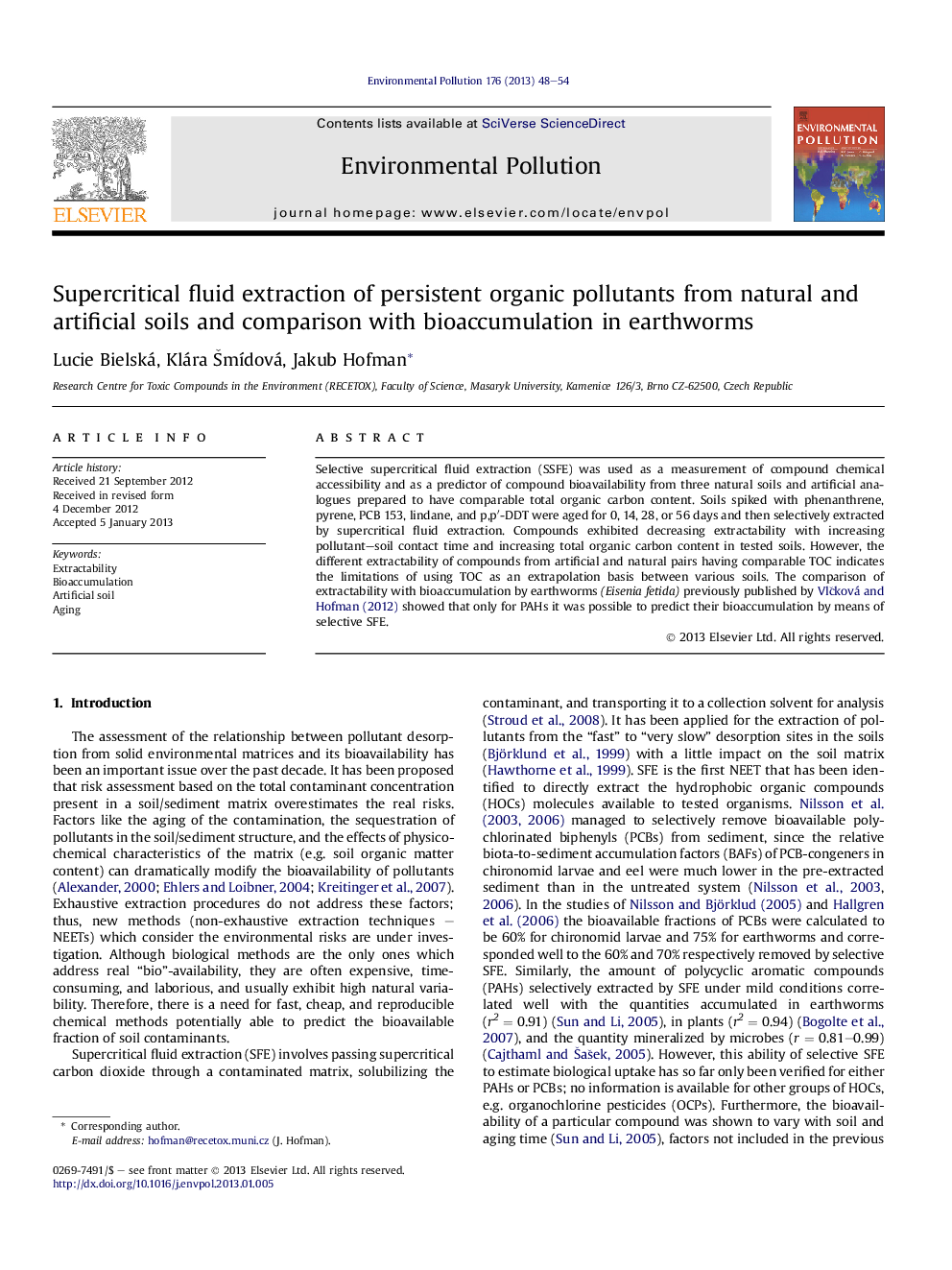| Article ID | Journal | Published Year | Pages | File Type |
|---|---|---|---|---|
| 4424511 | Environmental Pollution | 2013 | 7 Pages |
Selective supercritical fluid extraction (SSFE) was used as a measurement of compound chemical accessibility and as a predictor of compound bioavailability from three natural soils and artificial analogues prepared to have comparable total organic carbon content. Soils spiked with phenanthrene, pyrene, PCB 153, lindane, and p,p′-DDT were aged for 0, 14, 28, or 56 days and then selectively extracted by supercritical fluid extraction. Compounds exhibited decreasing extractability with increasing pollutant–soil contact time and increasing total organic carbon content in tested soils. However, the different extractability of compounds from artificial and natural pairs having comparable TOC indicates the limitations of using TOC as an extrapolation basis between various soils. The comparison of extractability with bioaccumulation by earthworms (Eisenia fetida) previously published by Vlčková and Hofman (2012) showed that only for PAHs it was possible to predict their bioaccumulation by means of selective SFE.
► The extractability of HOCs from natural and artificial soils was measured by SFE. ► The extractability decreased with increasing pollutant–soil contact time and TOC. ► The extractability differed between soils containing a similar amount of TOC. ► The SFE-extractability was compared with bioaccumulation. ► The bioaccumulation of PAHs was accurately predicted by means of SFE.
